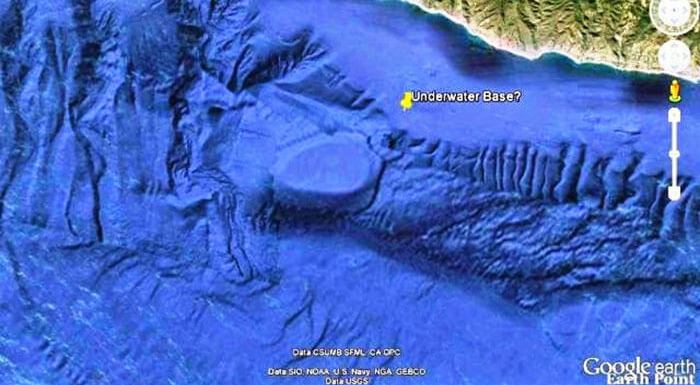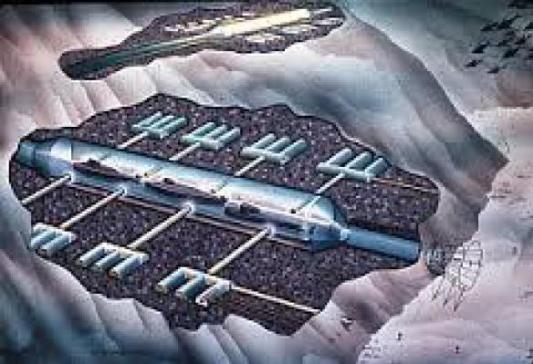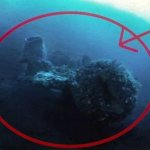
Around four years have passed since the CIA admitted Area 51 really exists. That doesn’t mean people weren’t aware that something undercover is going on there. And and in the similar fashion, we can explain the existence of underwater military bases.
People believe that the secretive material of Area 51 might have association with aircraft and missile experiments
For instance, take the US air strike against Libya in 1996. They used an f-111 jet which was in use since 1983, but its actuality remained secret for many years after.
These Special Access Programs had funds from the so-called ‘Black Budget’. They don’t exist in the public but they are a public secret.
A 1997 US Senate report labelled them as “so sensitive that they are exempt from standard reporting requirement to the Congress”.
Moreover, we all know how the United States has a long account of creating government agencies which operate in secret.
As an illustration, the government made The National Security Agency in 1952 but the public found out in the 1960’s.
Underwater Military Bases & In Bottom Bases
In the course of time, there were many arguments about the topic of underwater military bases and in bottom bases.
Namely, in 1968 the Stanford Research Institute examined the creation of many undersea bases. The name of the study was “Feasibility of Manned In Bottom Bases.”
We are going to show you the abstract of the study in this post for one reason. It is important to realize that the study reveals what the military-industrial complex was holding and what they could do with their technological power in the time of more than four decades ago.
Abstract:
The construction of thirty manned in-bottom bases within the ocean floors is technically and economically feasible. However, it will be necessary to establish some successive types of experimental facilities before a full construction program can be started. This could take 15 years. The major technology for a land-linked station in-bottom is established now; only adaptations are needed. The remaining experimental phases will require further development of equipment and techniques applicable to remote sea access. There are useful assignments for a succession of three experimental stations other than advancing in-bottom construction techniques. Science and engineering concerned with the oceans and their resources will be furthered and military tests of undersea base functions complimenting deeper operations can be accomplished. The costs of the experimental phase, called here a demonstration program, can be surprisingly modest: approximately one-half-billion dollars spent over 15 years.
A distinction between in-bottom bases and on-bottom facilities is made in the numbers of men enclosed. and the depth of water, wherein areas of one-atmosphere space can be created in bottom, and on-bottom facilities are made in the numbers of men enclosed and the depth of water, wherein areas of one atmosphere space can be created in-bottom at such low costs the ingress system can be amortized if the space required is reasonably large. Economics thus can dictate the choice between the two types; even so, some on-bottom facilities will be needed to aid the construction of remote in-bottom facilities. (source)
So, do these underwater military bases really exist today? We think they do, just like Area 51 did much before it became public.
In 1987, Deputy Director of Engineering and Construction for the U.S. Army Corps of Engineers, Lloyd A. Duscha, gave a speech at an engineering conference titled “Underground Facilities for Defense — Experience and Lessons.” In the first paragraph of his speech he said:
After World War II, political and economic factors changed the underground construction picture and caused a renewed interest to “think underground.” As a result of this interest, the Corps of Engineers became involved in the design and construction of some very complex and interesting military projects. Although the conference program indicates the topic to be “Underground Facilities for Defense — Experience and Lessons,” I must deviate a little because several of the most interesting facilities that have been designed and constructed by the Corps are classified. (Lloyd A. Duscha, “Underground Facilities for Defense — Experience and Lessons,” in Tunnelling and Underground Transport: Future Developments in Technology. Economics and Policy, ed. F.P. Davidson (New York: Elsevier Science Publishing Company, Inc., 1987, pp. 109-113.)
After this, he started explaining the Corps’ association with the construction of large bases deep under the Cheyenne Mountain in Colorado.
These types of speeches are not the only proof. There are also other files that researchers collected through the Freedom of Information Act that enlightened the whole topic even further.
William B. McLean also mentioned another example of in bottom bases deep beneath the ocean. He was the creator of the Sidewinder air-to-air missile and former Director of the China Lake Naval.
Mr. McLean made some criticisms to John Newbauer, editor-in-chief of astronautics and aeronautics at the time.
He said that these manufactories and projects were already under construction.
This happened in 1969; however, the abstract before is from 1968, meaning that these constructions could have been under construction earlier.
What Do These Plants Look Like?
Walter Koerschner was an artist for the United States Navy’s Rock-site team in the 60’s. His background is real since a pure Google search of his name comes alongside with “US Navy Illustrator”.
He made a contact with Richard Sauder, Ph.D. Mr. Sauder was an extensive researcher on this subject.
Koerschner made his contact just when the Navy established plans for large bases beneath the ocean.
He contacted Sauder to give him with some unique illustrations he had done for this project.
Dr. Sauder, in his book Hidden In Plain Sight, presents these illustrations, reporting the science and engineering behind the projects.
Here are a fragment and picture from the book:
This ‘racetrack’ facility — also called the ‘Nautilus Concept’ — that can dock three submarines at a time, with an adjoining sister facility that also can handle multiple submarines. The picture is virtually self-explanatory. Large submarines are hundreds of feet long, so the dimensions of a facility such as shown here would have to be very large. The central docking area might be more than a thousand feet long and easily more than a hundred feet in diameter. The living quarters would obviously have to accommodate hundreds of crew members in some degree of creature comfort.

The truth is that we will never know what precisely rests beneath our ocean grounds. However, we can practically say that underwater military bases exist and will run in the future too.









